I don’t need to tell you this, I’m sure, but Australia knows a thing or two about utes. They’re our best-selling vehicles for a reason, and there’s is really nowhere else on the planet where load-luggers are as revered as they are Down Under.
Well, except perhaps America. But that's a weird and largely deep-fried land dripping with Trumps, semi-automatic weapons and aluminium foil hats, so let's ignore them for the moment.
And so, when the Nissan Navara dual-cab came under fire for underwhelming coil spring rear suspension and steering slower than a forming stalactite, Nissan knew it had to do something. And when the updated 'Series II' car, which arrived in March last year, failed to completely fix the issue, it knew it had to something else entirely.
Consider this, then, Nissan's big and brutish Goldilocks - the one they hope is finally just right.
Nissan Navara 2018: DX (4X4)
| Safety Rating |
|
|---|---|
| Engine Type | Diesel Turbo 4, 2.3L |
| Fuel Type | Diesel |
| Fuel Efficiency | 6.6L/100km (combined) |
| Seating | 2 |
| Price From | $25,410 - $31,350 |
Does it represent good value for the price? What features does it come with?
8 / 10
It’s the usual complicated range for this updated Navara, which can be had in a staggering 26 different flavours across a full McDonald’s menu of models, be it single-cab, king-cab or dual-cab, and in a pick-up or cab chassis body style.
The cheapest option is the 4x2 RX single-cab, which starts at $25,990, vs the most expensive model, the ST-X Dual-Cab four wheel drive with its list price of $54,490. And there’s a Navara to fill every possible gap in between, with a price guide that’s just slightly longer than <i> The Lord of The Rings. We won’t publish every cost here (and that’s just the RRP, let alone the drive-away price…). Suffice it to say, how much you pay is up to you - it all depends on where in the model comparison you land.
The easiest way to break down this review is to sort them by trim levels, so hold onto your hats as we dive straight in.
.jpg)
The Navara single-cab chassis with four-wheel drive is the only configuration in which you’ll find a DX, and it features 15-inch steel wheels, cloth seats, auto headlights, manual air conditioning and cruise control.
Expect a simple stereo set-up with a single CD player (not a CD changer) and Bluetooth audio streaming, but no DVD player, DAB radio or a fancy sound system with all that subwoofer business.
The RX (which you can have in single-, king- or dual-cab) gives you 16-inch steel wheels, chrome around the front grille, door handles or mirrors, keyless entry and central locking, powered windows and a reversing camera that beams its image onto the rearview mirror as there’s no multimedia screen at this level. The dual-cab RX also gets updated suspension (which we’ll come back to), six speakers and two new ISOFIX attachment points.
A dual-cab-only SL model then splits the range, adding a LED headlights with daytime running lights/driving lights (but not HID, xenon or projector), improved tech with a five-inch infotainment screen, sidesteps and an electronic locking rear differential/diff lock on 4WD-equipped cars.
Next, the ST (available in king- or dual-cab) adds plenty of niceties like 16-inch alloy rims, leather-wrapped steering wheel and handbrake and an upgraded multimedia set-up courtesy of a bigger 7.0-inch touchscreen. The ST-X (available in king- or dual-cab) adds push-button start, dual-zone climate control, 18-inch alloys (yep, we’ve skipped 17 inch alloy wheels) and rear parking sensors. With no Apple CarPlay or Android Auto, you won’t be able rely on your iPhone’s GPS as a navigation system, but worry not - sat nav is standard from the ST on up.
.jpg)
Also new is a digital speedo that will be standard on all SL, ST and ST-X grades from June. No word yet on a N-Sport sports edition, but watch this space.
Now, if you thought the model list was an epic, just wait until you get a hold of the accessories list. Every conceivable bull bar, snorkel, ladder rack, sports/nudge bar and floor mats are on offer here, along with too many clever ways to carry your tool kit.
A dual battery system, though, will be an aftermarket job, as will specialist all terrain tyres or off-road tyres and flares or wheelarch extensions. Speaking of options, leather seats only arrive as part of a leather option pack, along with a sunroof in the sunroof option pack.
So, colours; 'Cosmic Black', 'Burning Red', 'Brilliant Silver', 'Deep Sapphire' (or blue, to us common folk), 'Hornet Gold' (the closest you’ll come to orange), 'Slate Grey', 'White Diamond' and 'Polar White' are on offer across most of the range, with premium paint an extra $550.
Is there anything interesting about its design?
7 / 10
Ah, do you like the look of the current Navara? Then we’ve got good news for you; nothing has changed this time around.
.jpg)
The exterior design still looks tough and muscular, and is probably at its best (which is also probably why it’s the most popular version) in dual-cab ST-X guise, what with its silver roof rails and side steps (the latter of which form a kind of 3D body kit). A chrome rear step bumper is standard across the dual-cab range, too.
Inside, it’s probably not the most modern-feeling interior, but the dimensions are good and it’s clean and functional, and the ambience is raised considerably with the optional leather seats. The cheaper models clearly focus on function over form, but the more expensive models - with their clear and easy-to-use touchscreen (5.0 or 7.0-inch size) in the centre of the dash - are a better bet if you don’t plan on visiting too many worksites.
.jpg)
There’s a a huge number of soft and hardtop tray covers in the options list, but no extra underbody protection listed.
How practical is the space inside?
8 / 10
The single- and king-cab Navara’s dimensions both stretch 5120mm, while the dual-cab version betters that slightly at 5255mm, which means 'boot size', or load lugging ability, varies slightly, too.
Obviously the cab chassis version with its steel tray prioritises heavy lifting, and your payload is a listed 1356kg in 2WD versions, and 1193kg in 4WD versions in single-cab guise. In the king-cab, those numbers fall slightly to 1256kg and 1178kg in 4WD versions. In the dual-cab cars, expect 1144kg (manual) or 1127kg (automatic). Buyers can opt for a soft or hard tonneau cover or a ute canopy, too.
.jpg)
The roof rails (standard from the dual-cab ST-X) unlock a world of roof rack options for extra storage space, too. But possibly the biggest practicality perk is the addition of two ISOFIX attachment points (one in each window seat in the second row) to the dual-cab versions of the Navara, finally meaning it can be used as a genuine family vehicle with proper child restraints.
All but the entry-level RX single-cab nab three power sources (the dual-cab pick-ups get a fourth in the tray), and dual-cabs also make use of four cupholders and bottle storage in the doors.
What are the key stats for the engine and transmission?
8 / 10
There are two diesel engines on offer here; a twin-turbocharged diesel good for 140kW at 3750rpm and 450Nm at 1500pm, and a 2.3-litre diesel engine equipped with a single turbocharger that will generate 120kW at 3750rpm and 403Nm of torque at 1500rpm. Those engine specs don't seem that dissimilar, sure (and yes, the engine size is identical), but the extra horsepower makes a difference on the road.
.jpg)
Both can be paired with a six-speed manual transmission or seven-speed automatic transmission, feeding power to two or all four wheels, depending on whether you opt for a 4x2 or 4x4 model. There is no petrol on offer, and you can forget hybrid or LPG.
A diesel particulate filter (DPF) is fitted, of course, and should you see the warning light pop on, a cruise at more than 80km/h will be required to burn off the nasties.
The biggest news here is the overhaul of the rear suspension in most of the dual-cab cars (a significant cause of complaint in the outgoing model). New and stiffer dual-rate springs on SL, ST and ST-X dual-cab cars have massively improved this Navara’s driveability when carrying a load, and the steering has been made significantly faster, too.
Expect a towing capacity of 750kg (unbraked) and 3500kg (braked) across the Navara range - which are good pulling statistics - and a towbar pack will set you back around $1000. The gross vehicle weight is 2910kg across the range.
Nissan doesn’t quote performance figures (like 0-100 acceleration or top speed), but then, this isn’t a car you’ll be lapping Mount Panorama in. So instead, let's focus on ground clearance (max 230mm) and turning circle (11.8m).
In the question of timing belt or chain, the Navara uses a chain, but for other ownership issues, like engine issues (say you’re blowing black smoke), automatic gearbox problems, clutch, injector or gearbox issues or for oil type or capacity, keep an eye on out Navara owners page.
How much fuel does it consume?
8 / 10
The claimed fuel consumption (diesel) for the single turbo engine is between 6.4L/100km and 7.1L/100km, depending on which model you plonk it in, while the claimed fuel economy (diesel) for the twin-turbo option is between 6.5L to 7.0L/100km on the combined cycle.
The Navara’s 80-litre fuel tank capacity promises a long range no matter the engine, with the mileage near enough identical.
What's it like to drive?
8 / 10
This big news here is what’s happening under the skin. Nissan is being refreshingly upfront about the owner complaints surrounding the old car. Namely soft suspension that just couldn’t handle a heavy load, and steering that felt slow and cumbersome.
And so that’s exactly where they focussed their attention this time around. For one, the rear suspension has been completely re-worked, with stiffer dual-rate springs at the back, which made light work of the 650 kilograms we towed at launch - and that’s honestly not something you could say about the out-going car, in which a heavy load would make the Navara feel overly bouncy, and not exactly confidence-inspiring.
.jpg)
And the steering is now significantly faster, too, which makes you feel far more connected with the front tyres, removing the vagueness the old car served up.
They’re the big changes, and they’ve genuinely changed the character of the dual cab cars for the better. We’ve now towed more than a tonne, attacked some twisty stuff without a load on-board and we’re now carrying some weight in the back, and it’s really handled everything with ease.
The only real downside is that for every action there’s an equal and opposite opposite reaction, and so it will come as no surprise that stiffening the suspension has made the Navara feel a little harder without a load on board, and it can feel like it’s skipping over bumps in the road, which you can feel lightly tugging on the steering wheel. But across the board, the changes have been a real bonus for anyone who is going to be putting their Navara to work.
Our time behind the wheel was largely road (and some pretty straightforward gravel), so we’ll leave the off-road ability review to our own Marcus 'Crafty' Craft a little later. Hell, even Melbourne’s perennially dodgy weather held up, so we couldn’t even challenge the wading depth.
Warranty & Safety Rating
What safety equipment is fitted? What safety rating?
7 / 10
New stuff? Well, there’s the new ISOFIX attachment points in the back of the dual-cab cars, adding two legitimate child seat anchor points that can transform the Navara into a family car. The backseat is more than big enough to fit two baby car seats, too, but I wouldn't want to be squeezed between them.
There’s a new reversing camera, too, which features on everything from the Navara king-cab RX model and up. Beyond that, expect an airbag count of seven (two front, two front-side seat, two side-curtain and driver’s knee) as well as the usual suite of traction and braking aids including, ESP, ABS, and EBD.
Only the Dual-Cab ST-X get rear parking sensors, along with hill descent control and hill start assist in four-wheel drive cars.
The Nissan Navara (single-cab) was awarded the maximum five-star ANCAP safety rating when assessed in 2015.
So, where is the Nissan Navara built? Ours arrive from Thailand.
What does it cost to own? What warranty is offered?
7 / 10
The Navara range is covered by a three-year/100,000km manufacturer warranty (though there are dealership extended warranty programs available), and will require a trip to the service centre every 12 months or 20,000km.
The 'myNIssan Service Certainty' capped price servicing Navara program limits the service costs for the first six services to between $547 and $744 per dealership visit.
There's a full-size spare tyre, too. Handy when you get a flat. And the owner's manual is filled with handy hints.
For all problems, including reliability ratings, common faults, issues, complained and defects, keep an eye on our Navara owner’s page.
Verdict
Kudos to Nissan for listening to its customers, and even more kudos for actually acting their complaints. The changes to the ride and handling (and the tweaking of the technology offering) have made the dual-cab Navara a much better vehicle to put to work.
Is the Navara on your work, play, or family ute shopping list? Tell us why or why not in the comments below.
Pricing Guides

Range and Specs
| Vehicle | Specs | Price* |
|---|---|---|
| DX (4X4) | 2.3L, Diesel, 6 SPEED MANUAL | $25,410 - $31,350 |
| RX (4X2) | 2.3L, Diesel, 6 SPEED MANUAL | $16,610 - $21,230 |
| RX (4X4) | 2.3L, Diesel, 6 SPEED MANUAL | $20,460 - $25,850 |


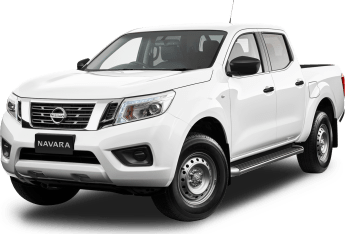



.jpg)

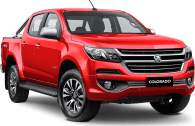
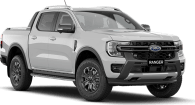




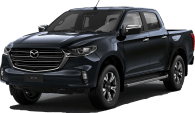
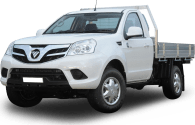






.jpg)
.jpg)





.jpg)

.jpg)
Comments